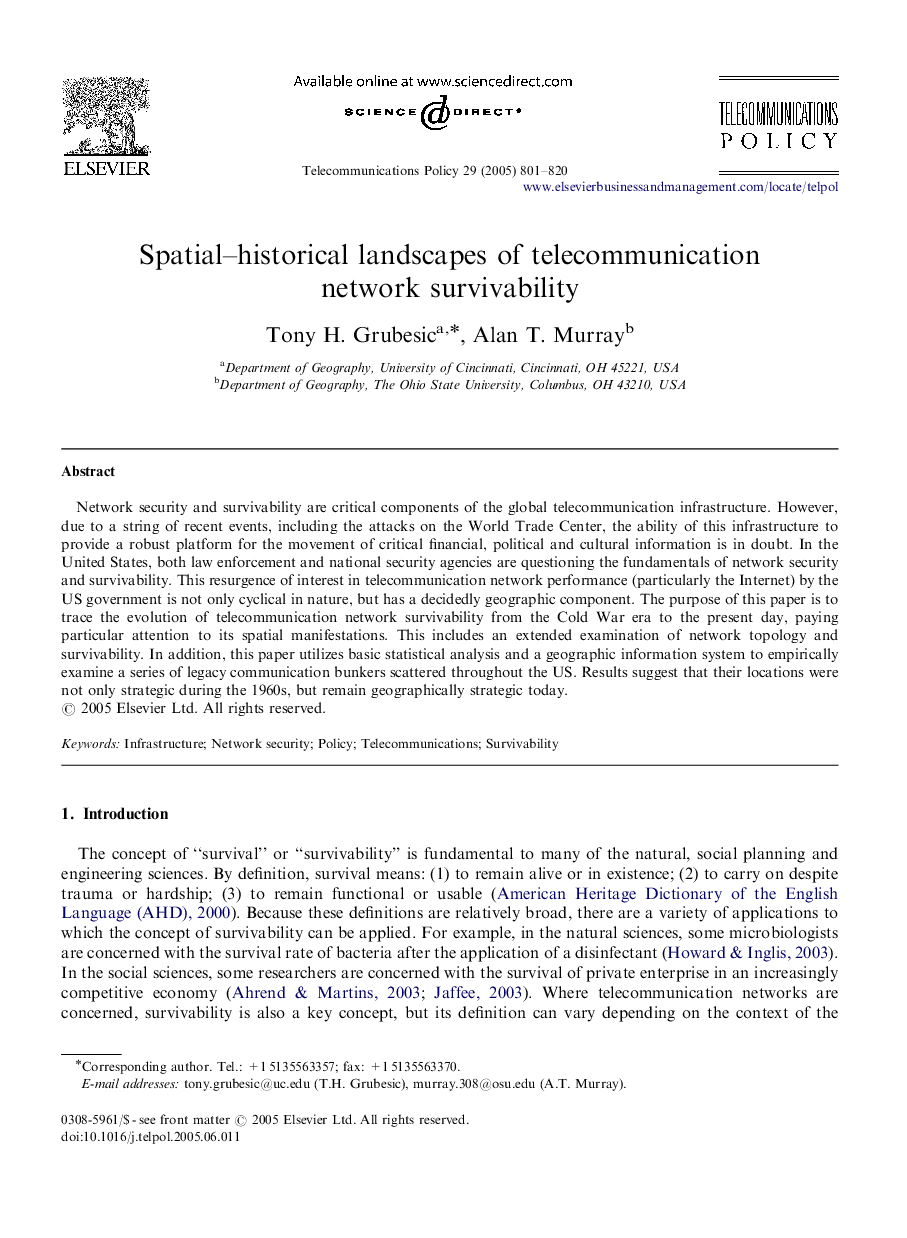| Article ID | Journal | Published Year | Pages | File Type |
|---|---|---|---|---|
| 10368387 | Telecommunications Policy | 2005 | 20 Pages |
Abstract
Network security and survivability are critical components of the global telecommunication infrastructure. However, due to a string of recent events, including the attacks on the World Trade Center, the ability of this infrastructure to provide a robust platform for the movement of critical financial, political and cultural information is in doubt. In the United States, both law enforcement and national security agencies are questioning the fundamentals of network security and survivability. This resurgence of interest in telecommunication network performance (particularly the Internet) by the US government is not only cyclical in nature, but has a decidedly geographic component. The purpose of this paper is to trace the evolution of telecommunication network survivability from the Cold War era to the present day, paying particular attention to its spatial manifestations. This includes an extended examination of network topology and survivability. In addition, this paper utilizes basic statistical analysis and a geographic information system to empirically examine a series of legacy communication bunkers scattered throughout the US. Results suggest that their locations were not only strategic during the 1960s, but remain geographically strategic today.
Related Topics
Physical Sciences and Engineering
Computer Science
Information Systems
Authors
Tony H. Grubesic, Alan T. Murray,
